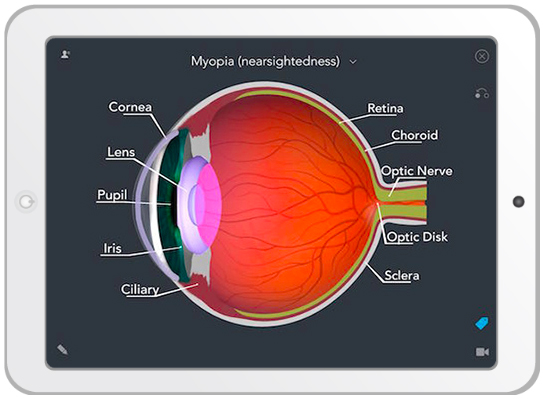DENVER, CO – The convention room at the Innovation Pavilion in Centennial, Colorado, was filled to capacity on Thursday, June 18th for the monthly gathering of Prime Health, a statewide non-profit organization dedicated to “building Colorado’s national reputation as a leading health innovation hub.” Around a hundred and thirty people were seated in the audience, and a camera had been set up to live-stream the meeting for those who were unable to attend.
While the main draw of the crowd that night was the presentation that Chris Glode, the VP of Under Armour Digital, was scheduled to give, the diverse gathering of entrepreneurs, investors, physicians, and healthcare administrators in attendance seemed just as interested in getting to know one another as they were in hearing Glode speak. Prior to the start of the meeting, the lobby had been filled with the busy sound of conversation, and it was only when Media Shakiba, Center Manager at the Innovation Pavilion, had announced through a microphone that the meeting would begin that the commotion died down.
Though everyone was excited to hear how Under Armour (UA), the multi-national sports apparel company that’s currently giving Nike a run for its money, was planning to expand its digital health presence, the Prime Health attendees were just as eager to speak with one another about their own projects. In the current digital health boom, opportunity is often no more than a conversation away.
Connected Fitness: The UA Vision for Digital Health
A palpable sense of anticipation filled the convention room when Chris Glode took the microphone. A tall man in glasses wearing a white Under Armour hoodie, Glode’s introspective air contrasted sharply with the slickly produced and aggressively athletic video that began his presentation. Entitled “Voice of the Brand,” it featured a montage of athletes in action, from sports celebrities to everyday enthusiasts, while a variety of newscasters chronicled Under Armour’s spectacular rise in popularity over the last decade, effectively associating the athletes’ struggle with the company’s own.
But what captured the attention of his audience that evening was Glode’s explanation of the Under Armour vision for digital health. “We’ve been building this ecosystem that we call Connected Fitness,” he told his listeners, “which spans wearables, connected clothing, smartphone applications and the like, with a common mission of transforming human health and making athletes better.”
According to Glode, the Connected Fitness vision was first conceived in 2011 with the creation of E-39, an athletic shirt sporting a built-in heart monitor, an accelerometer, and a gyrometer. Allowing athletes to measure their performance in real-time, E-39 was famously used to live-transmit football players’ stats to the television audience of the 2011 NFL Combine.
Glode then showed the members of Prime Health a commercial called “Future Girl.” Meant to encapsulate the direction that Under Armour is taking, it opened on a young woman removing a piece of clothing from a dresser drawer. When she unfolded that piece of clothing, it became a sheet of shimmering blue fabric that slowly molded to her form. This snug outfit possessed a gleaming touchscreen on one sleeve, which the young woman tapped to program her workout before taking off running down the streets of a near-future metropolis.
“Whether it’s in five years or in ten years,” Glode informed his audience, “a lot of that vision will actually come true.”
At the heart of Under Armour’s current digital health endeavors is UA Record. Considered by Glode to be “the centralized hub of our app ecosystem,” UA Record is intent on becoming to workouts what Facebook is to social media or what LinkedIn is to the online resume. Billed as “the ultimate health and fitness tracking system,” UA Record actively measures its user’s athletic performance, providing them with customized feedback and instruction, while enabling them to compare stats with their friends and favorite athletes.
All of these developments have occurred within the shadow of Under Armour’s recent growth spurt. “In the last eighteen months, the company has doubled in size in every possible way,” Glode admitted before detailing how UA Digital had expanded from 200 employees in 2014 to over 400 currently, with that number expected to reach more than 500 by next year.
“Having brought together the greatest minds in connected fitness around the world,” Glode said as he neared the end of his presentation, “we’re just now starting to unlock the magic that can happen when we collaborate and share our experience.”
iC3D Health and the Problem of Patient Engagement
“Media asked ten other companies to present,” Nim Patel, the CEO of Denver-based digital health start-up iC3D Health, admitted as he began his talk, “and nobody else was foolish enough to follow the UA guys.” This drew a ripple of laughter from his listeners, as the other start-up entrepreneurs in the audience imagined what it would be like to follow the flashy commercials and ambitious projects that had dazzled them during Chris Glode’s Under Armour presentation.
Yet it became immediately apparent as Patel began his concise and well-rehearsed talk that the experience of iC3D in Colorado’s digital health market could provide insights that were just as valuable to the members of Prime Health as those that had been offered by the Under Armour Digital VP.
“Every time you are interacting with someone, you are competing for their attention,” Patel told his audience, introducing the problem at the heart of iC3D’s approach. “In the healthcare situation, you are competing with fear, uncertainty, and doubt about what might be going on.”
He deftly framed this problem in terms of patient understanding and recall. “One hundred percent of participants in a healthcare situation have good intentions, yet fifty percent of what is said to a patient during a consultation is lost immediately. And of the fifty percent that the patient understands, only fifty percent of that is retained.”
After showing a slide demonstrating the role of patient satisfaction in increasing understanding and recall in the clinical setting, Patel shared one of the ways that iC3D was targeting satisfaction to improve patient engagement.
“Typically, how this used to occur is with a plastic model or with a chart on the wall,” Patel explained as he presented his audience with an artfully rendered 3-D eye. “A myopic eye is very simply in layman’s terms a slightly elongated eye.” He then showed how a doctor could illustrate this point by toggling between a 3-D eye with twenty-twenty vision and one with myopia.
“This alone tested off the charts,” he added, referring to the soaring rates of patient satisfaction that the rendering had generated.
According to Patel, in clinics where iC3D’s CRM platform has been implemented, digital engagement with patients has increased fourfold. A similar surge in clinic satisfaction has also been observed, with a strong adherence to the platform among physicians and clinical staff. And all of the clinics that use iC3D have experienced a growth in conversion rates of between two and seven percent.
“While that doesn’t sound like a lot of money,” Patel admitted, “for the average Lasik clinic that we work with it represents an increase of one hundred to two hundred thousand dollars in annual revenue for essentially doing nothing more than implementing our platform.”
There’s Opportunity for Everyone
The June 18th Prime Health gathering made clear to all those in attendance how unique the present moment is for Colorado’s digital health community. From the incredible scope and far-reaching implications of Under Armour’s Connected Fitness vision, to the immediately practical and easily implemented iC3D platform, the current digital health boom is providing opportunities for everyone.
Are you the head of a Colorado-based digital health company? If so, Prime Health would like to speak with you as part of their 2015 econometric analysis of Colorado’s digital health ecosystem. By contacting them here to let them know that you’re interested in participating, you’ll be helping Colorado get one step closer to becoming the top digital health cluster in the nation!






Be the first to comment on "In the Current Digital Health Boom, Everyone’s Finding An Opportunity"